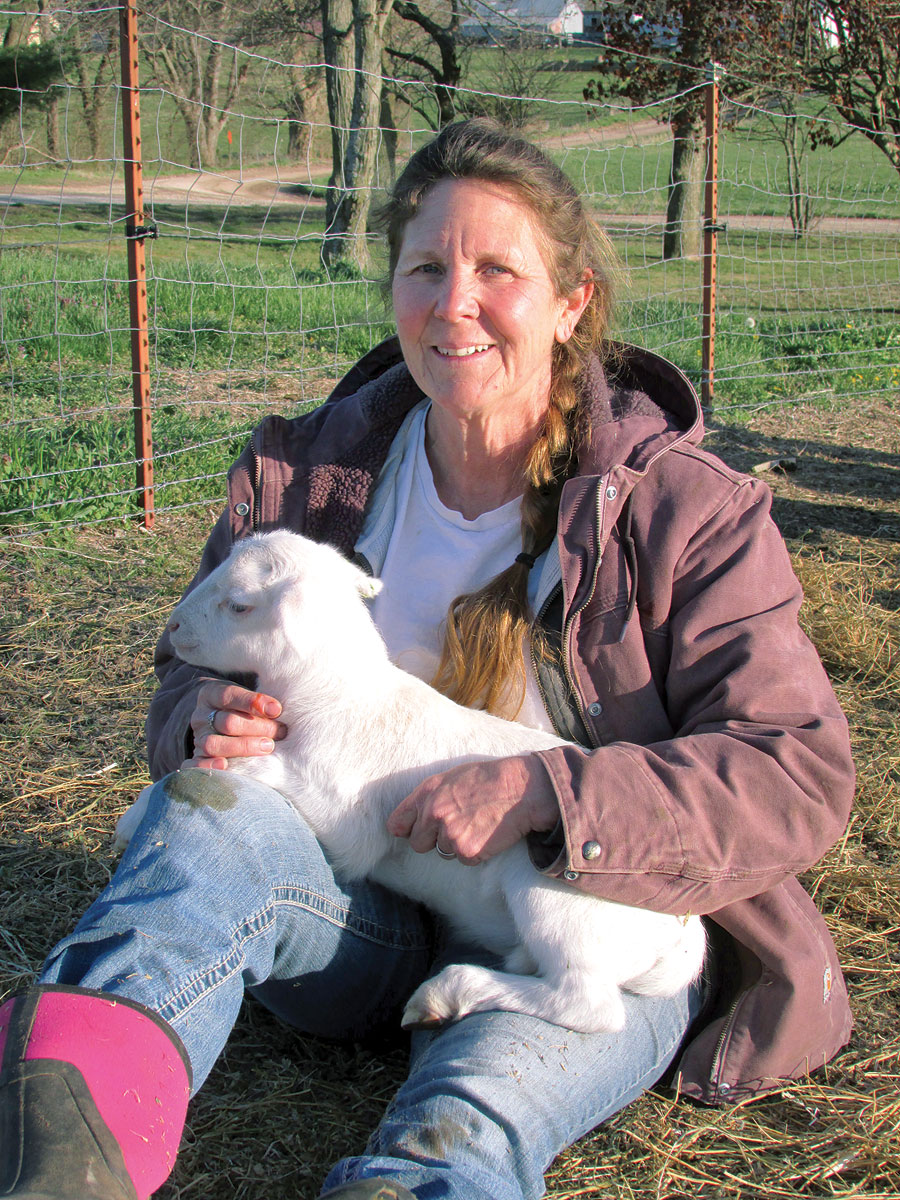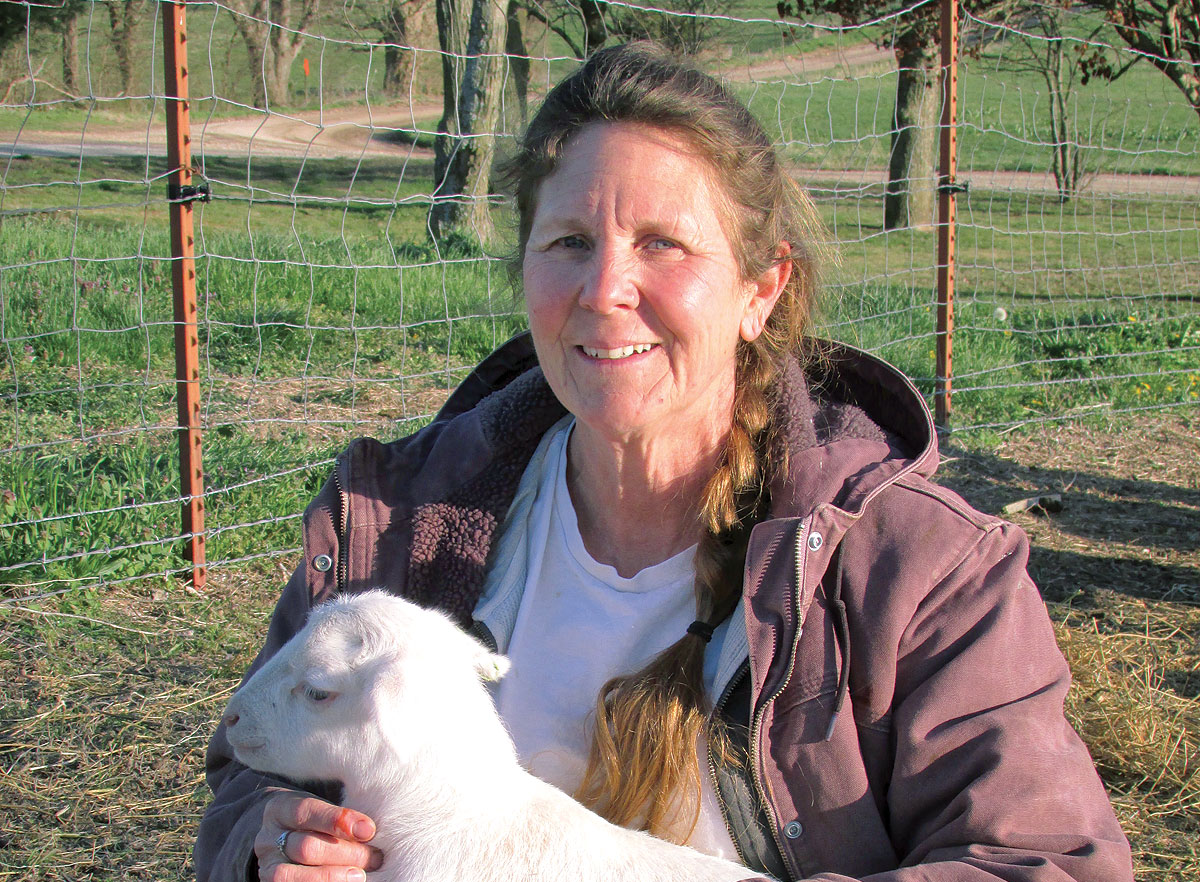 Stark City, Mo., couple has the largest herd of Royal White sheep in the state
Stark City, Mo., couple has the largest herd of Royal White sheep in the state
Carie Trammell of rural Stark City, Mo., does nothing by half-measures when it comes to raising cattle, children, chickens and, most recently, sheep.
Every spring, from mid-March through mid-April, she spends nights on a cot in the barn with her Royal White ewes when they’re ready to lamb, a practice she attributes to the success of her herd.
“Lambs are fragile,” Carie explained. “Being with them during birth is really the only way to guarantee a low mortality rate.
“I also need to be there so I’ll know which babies go with which mothers, and to tag them with the names of their daddies. When I get a chance, I log all of the data into one large book.”
Carie and her husband, Shannon, are relative newcomers to sheep-rearing, but have already laid claim to being the largest producer of Royal White sheep in Missouri, although the project is primarily Carie’s. Last year’s breeding stock consisted of three rams and 34 ewes, but spring brought the newborns which, with 58 live births, nearly tripled the size of her herd. Only one lamb was lost.
Once a self-confessed “city girl,” Carie was working in a beauty salon in Neosho, Mo., when she met and married cattle rancher and traveling consultant, Shannon Trammell. From that point, her life changed dramatically. She styled hair by day, but her remaining hours were spent learning the cattle business.
“When we added three children to the mix, life got pretty hectic,” Carie explained.
Some 20 years later, she traded in salon work for raising chickens.
“We contracted with George’s and built six broiler houses, in hopes that the chickens would some day allow Shannon to retire from his traveling job,” Carie stated.
Four years ago, the Trammells’ adult son approached them with his desire to take over the care of the broiler houses.
“I had just turned 50. I guess he thought I was getting old,” Carie laughed. “To tell the truth, that number did sort of weigh on me. I thought, ‘maybe it is time to slow down,’ so I said OK.”
“It was nice at first,” Carie continued. “I had lots more time, so I started making goat’s milk soaps and lotions, and marketing them in feed stores when I made trips into town. It was fun for a while, but I got restless. I wanted some other type of livestock to take care of – not more cattle, though; the calves were starting to feel heavier to me.
“As Shannon and I were thinking about options, it suddenly clicked. We had just purchased a 40-acre tract, sewn in Bermuda grass, and it occurred to us that it would be perfect for sheep. I knew that’s what I wanted. I’d never raised sheep before, but the challenge was appealing. Plus, lambs would be easier to handle than calves.
“We began researching different breeds – something for meat and breeding stock – nothing that needed to be sheared,” she added.
The Trammells’ search led them to Royal Whites, a domestic, disease-resistant hybrid, bred for increased muscle and less fat. With a mix of Dorper and St. Croix traits, Royal Whites are naturally polled and have a downy hair undercoat, resulting in the shedding of their wool every season.
The Trammells purchased 35 ewes from a seller in Prague, Okla., 20 of which were bred. They were informed that they weren’t due to lamb for a couple more weeks.
“I’m not sure if his dates were off, or if stress caused it, but, either way, those ewes started going into labor within three days of us getting them home,” Carie recalled. “I’d never raised sheep before, let alone lambed any, so things got exciting in a hurry. I was determined to succeed, though. I put the ewes in the barn, set up a cot and spent the next 28 nights there. My live birth rate was 100 percent.
“That first year, it took some time to find markets for my sheep. But, now, most of them are spoken for before they’re born.”
Most of the Trammells’ lambs are sold for breeding stock, although Carie does raise a few wethers to sell directly to butchers.
“Lamb is one of the sweetest, most tender meats there is, especially when the sheep are grass-fed, as ours are,” she said.
The Trammells’ goal is to build their herd up to 50 ewes, a number Carie’s confident she’ll be able to manage by herself. Given her determination, she’s probably right.







